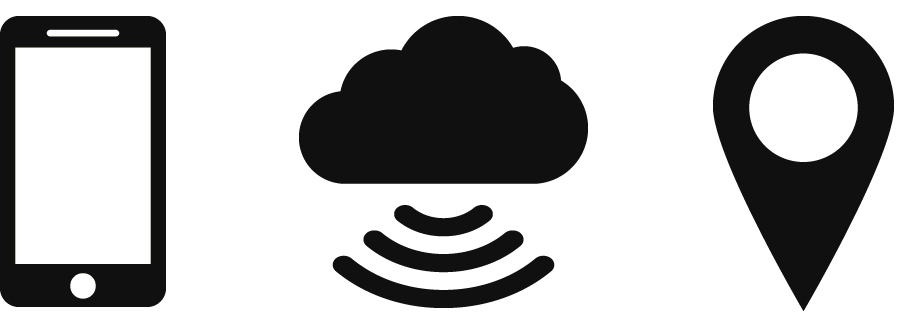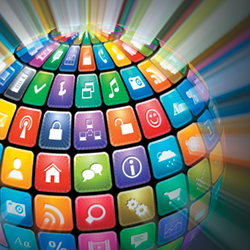|
REGISTRATION REQUIRED
sizzle awards
Video Player is loading. Automatic Transmission
Nissan Motor Co. Ltd. fuses mobile and RFID technology to create an interactive exhibit experience that fuels an 80-percent increase in dwell time and jumpstarts approval ratings by 15 percent. By Charles Pappas TRAFFIC BUILDER
Exhibitor: Nissan Motor Co. Ltd.
Creative/Production: George P. Johnson, Los Angeles, 310-965-4300, www.gpj.com; Spinifex Group, New York, 212-738-7548, www.spinifexgroup.com Show: North American International Auto Show, 2014 Budget: $1 – 1.9 million Goals: Increase dwell time by 50 percent compared to 2013 show results. Improve attendees' approval rating of the booth by 10 percent. Results: Bettered the average dwell time by 80 percent. Boosted its approval rating by 15 percent. PHOTOs: kathryn rapier photography inc.
When Nissan Motor Co. Ltd. started preparing for the 2014 North American International Auto Show (NAIAS) in Detroit, the automaker's marketing team knew it needed to shake up the way customers perceived the Nishi-ku, Japan-based company, whose origins stretch back more than a century. In recent years, consumer enthusiasm for the brand and Nissan products had stalled. One report from Consumer Reports National Research Center, in fact, concluded that when it came to considering a new car brand, 27.8 percent of potential buyers flirted with Toyota Motor Corp., while 21 percent contemplated Honda Motor Corp. Even though Toyota's and Honda's automotive designs were often viewed as antiquated, Nissan chugged far behind the two automotive giants, with just 9.9 percent of prospective buyers regarding the brand as one they'd potentially purchase in the future.
Certainly, there was nothing outdated about its current products, as evidenced by its plans for NAIAS. Besides showing its existing autos, such as the electric-power Leaf, Nissan intended to debut its Sport Sedan Concept, a car that would never actually be built but whose sculpted contours suggested the way the company will design upcoming products. This fusion of sports car and spaceship, Nissan hoped, would enthrall attendees as much as hoverboards, jetpacks, and other imagination-whetting visions of technological things to come. Normally, those impressive attractions alone would seem sufficient enough to drive attendees to the company's booth in numbers that more resemble mobs than crowds. But Nissan was also faced with the formidable prospect of nearly 47 vehicle introductions from direct competitors at NAIAS, with many of them poised on the bleeding edge of technology, such as the electric Fit EV and e-Golf wheeled out by Honda and Volkswagen AG, respectively. 
Thus, with its competition stiff, its brand misunderstood, and its goals for the auto show ambitious, Nissan's marketing team needed to radically reset consumer perception of its products. Working with experience-marketing agencies George P. Johnson and Spinifex Group, Nissan concluded that to exhibit innovative automobiles, it should use equally ingenious technology. In this case, the company determined that smartphones should play a fundamental role in the booth experience. This decision was based on two key points: First, 64 percent of all American adults own a smartphone, according to the Pew Research Center. Second, today's smartphones play a pivotal role in purchasing an automobile. For example, the "Automotive Buyer Influence Study," commissioned by the website AutoTrader.com, showed 39 percent of recent car buyers used a smartphone to shop and compare models, nearly double the metrics from 2013. To simulate the range and flexibility smartphones offer its audience, then, Nissan's experience would have to be dense with information, and engage and educate potential customers by giving them the tools to explore the company's products at their own pace. 
Instead of technology for technology's sake, the Wi-Fi network and RFID readers made the experience more personal.
More than just mindlessly going digital for the sake of going digital, Nissan's marketing team knew the technology had to blend seamlessly within the physical architecture of its booth, to reflect a world whose wired connectivity customers accept as the norm. For Nissan to rely on items such as fliers, sales spiels, and video monitors running loops of product patter to convey information could seem as out of date to attendees as selling a vehicle without airbags. Teaming up with Stark RFID Inc., a Greenville, SC-based company that designs customized Radio Frequency Identification (RFID) software, Nissan mapped out an experience it dubbed the Digital Landscape. When attendees entered the Nissan booth, staffers would hand them a pair of branded earbuds for their phones, help them connect to Nissan's Wi-Fi network, and then direct them to any of several product zones where discreetly placed RFID readers would sense attendees' smartphones and initiate an interactive and customizable educational experience. The Fast and the Curious When NAIAS 2014 opened its doors in January, a record-setting 110,509 enthusiasts poured into Detroit's Cobo Center. Many swarmed to attractions such as Alfa Romeo Automobiles S.p.A.'s trio of vintage race cars that evoked its playboy image of years past, and Mercedes-AMG's self-driving concept vehicle with rotating front seats that summoned its stunning promise of years ahead. But the booth captured visitors' eyes with the arresting power of emergency flashers blinking furiously in the dark. Looming over the company's 17,000-square-foot exhibit was a scarlet halo that rose almost 40 feet into the air. Comprising three independently cantilevering oval rings, the expansive ceiling element was made of lightweight aluminum, clad with curved Dibond, and finished with white tensioned-fabric sleeves. With a span exceeding 200 feet, the halo coincidentally mirrored the so-called "floating" roof of the Sport Sedan Concept on display. Drawn by the carmine crown that could be seen across the expanse of the show floor, attendees streamed into the voluminous booth with the regularity of water from a burst hydrant. When they entered, they met 12 staffers in branded shirts, who directed them to any of three "totems" – 6-foot-high plastic cylinders loaded with hundreds of pairs of earbuds. Guests grabbed a pair of the earbuds, and then, coached by staffers (or simply tutored by instructions printed on the sides of the totems), they connected to a Nissan Wi-Fi network through their cellphones. Next, they surfed to a special microsite (nissanapp.com) via their phone's browser that would initiate their digital exhibit experience. Once installed, the microsite prompted visitors to enter a six-digit code located on the back of an RFID tag affixed to their earbuds' cord, and complete a registration process. Once the visitors donned their earbuds, they could listen to a soothing techno beat streaming over the Nissan Wi-Fi network, while they kicked the proverbial tires on the Sport Sedan Concept resting upon a raised circular platform. After they finished scoping out the car of the future, guests could explore the remainder of the booth at their own pace through seven different RFID-enabled zones, six of which featured various Nissan models. 
Auto Zones After absorbing an owner's manual worth of data at the six product stations, guests cruised over to the seventh interactive zone containing the Innovation Wall and the GT-R racing game, which offered more entertainment than education. Comprising a roughly 18-foot-long stretch of four seamless 55-inch LCD touchscreens, the Innovation Wall employed Kinect, the motion-sensing technology Microsoft Corp. developed for its Xbox consoles. Evoking images of the movie "Minority Report," the Wall offered a variety of dazzling experiences, including the mesmerizing "Meet the Machines," which featured live-action footage of a Nissan GT-R LM Nismo race car, compiled by an array of 74 cameras filming at 1,000 frames per second. When attendees came within a few feet of the Innovation Wall, a message appeared on its four screens asking them to extend their hands. The gesture activated a visual presentation that roared to life with a high-definition video of the Nismo bulleting through cream-thick fog on a track so wet and black it resembled a winding river of liquid tar. Using their hands in the same manner that an orchestra conductor uses his baton, guests manipulated the onscreen action, slowing down the zooming car to a glacial crawl, or speeding it up to a Flash-fast blur. 
Drive Time Nissan's approach to NAIAS was as beautiful as a classic Rolls-Royce. As word of the Digital Landscape spread across the show floor, the booth became packed as tightly as a clown car. Of the approximately 500,000 guests who streamed into Nissan's exhibit over the course of the show, 2,000 visitors – nearly 20 percent more than expected – took part in the Digital Landscape experience. Most importantly, Nissan sped past its two main goals for the event: Guests clocked an average of 18 minutes' dwell time in the booth, a jump of nearly 80 percent from 2013, and their approval rating of the exhibit soared to an almost-perfect 98 percent, an increase in excess of 15 percent from the year before. Furthermore, heat maps generated by the RFID technology allowed the company to fine tune its exhibits at car shows around the globe, from Chicago to Shanghai. Not surprisingly, Sizzle Awards judges' approval levels matched those of attendees. "Instead of technology for technology's sake, the Wi-Fi network and RFID readers actually made the experience more personal," one judge said. Another noted that, "This brilliant concept allowed Nissan to reach far more people than if a staffer had to personally speak to every attendee in order to convey the company's key messages." Numbers like that can only tell you what an accountant sees, and they can perhaps miss the bigger picture. Nissan's Digital Landscape triumphed because its mix of sorcerous technology and customized information offered auto show attendees, like the Beach Boys sang in "Still Cruisin'," their ode to the steeds of steel and chrome, "a ride you can't forget." E
|
|
|||||||||||||||
|
||||||||||||||||||||||||||||
|
|
||||||||||||||||||||||||||||
|
TOPICS Measurement & Budgeting Planning & Execution Marketing & Promotion Events & Venues Personal & Career Exhibits & Experiences International Exhibiting Resources for Rookies Research & Resources |
MAGAZINE Subscribe Today! Renew Subscription Update Address Digital Downloads Newsletters Advertise |
FIND IT Exhibit Producers Products & Services All Companies Get Listed |
EXHIBITORLIVE Sessions Exhibit Hall Exhibit at the Show Registration |
ETRAK Sessions Certification F.A.Q. Registration |
EDUCATION WEEK Overview Sessions Hotel Registration |
CERTIFICATION The Program Steps to Certification Faculty and Staff Enroll in CTSM Submit Quiz Answers My CTSM |
AWARDS Exhibit Design Awards Portable/Modular Awards Corporate Event Awards Centers of Excellence |
NEWS Associations/Press Awards Company News International New Products People Shows & Events Venues & Destinations EXHIBITOR News |
||||||||||||||||||||
|
||||||||||||||||||||||||||||



 The Great Wall
The Great Wall Futurama
Futurama Meet the Machines
Meet the Machines


